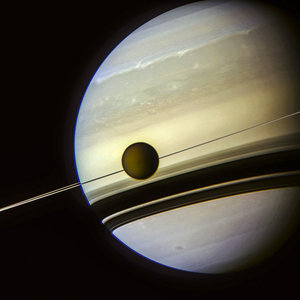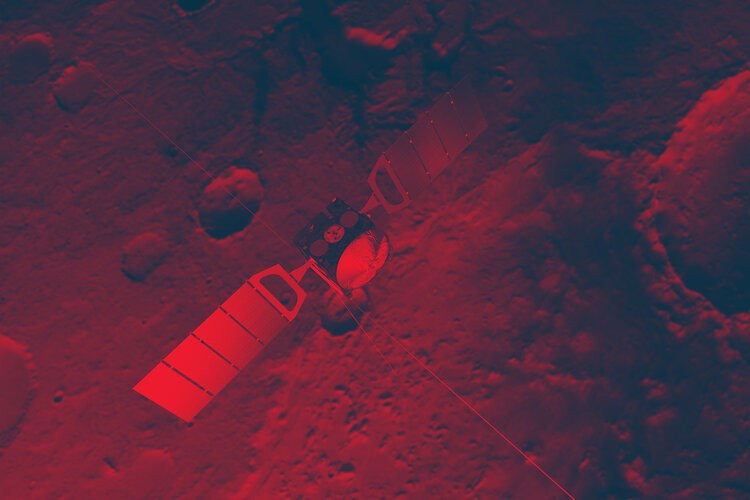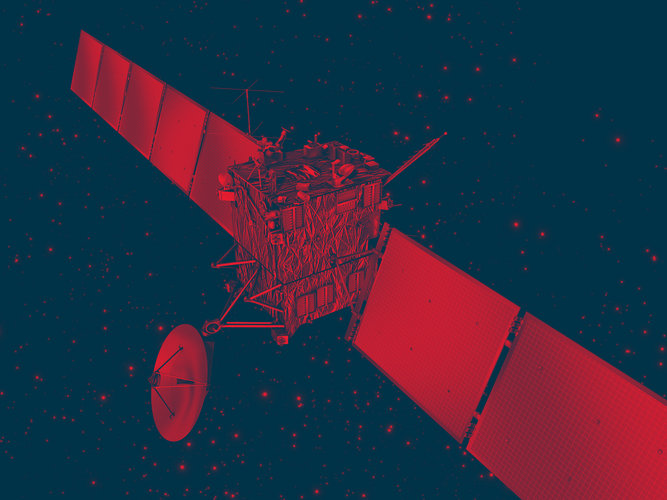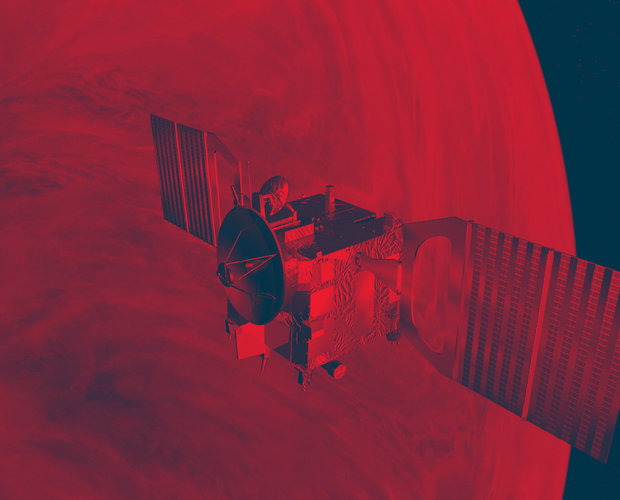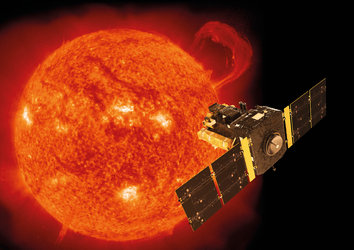Tracking a solar eruption through the Solar System
Ten spacecraft, from ESA’s Venus Express to NASA’s Voyager-2, felt the effect of a solar eruption as it washed through the Solar System while three other satellites watched, providing a unique perspective on this space weather event.
Scientists working on ESA’s Mars Express were looking forward to investigating the effects of the close encounter of Comet Siding Spring on the Red Planet’s atmosphere on 19 October 2014, but instead they found what turned out to be the imprint of a solar event.

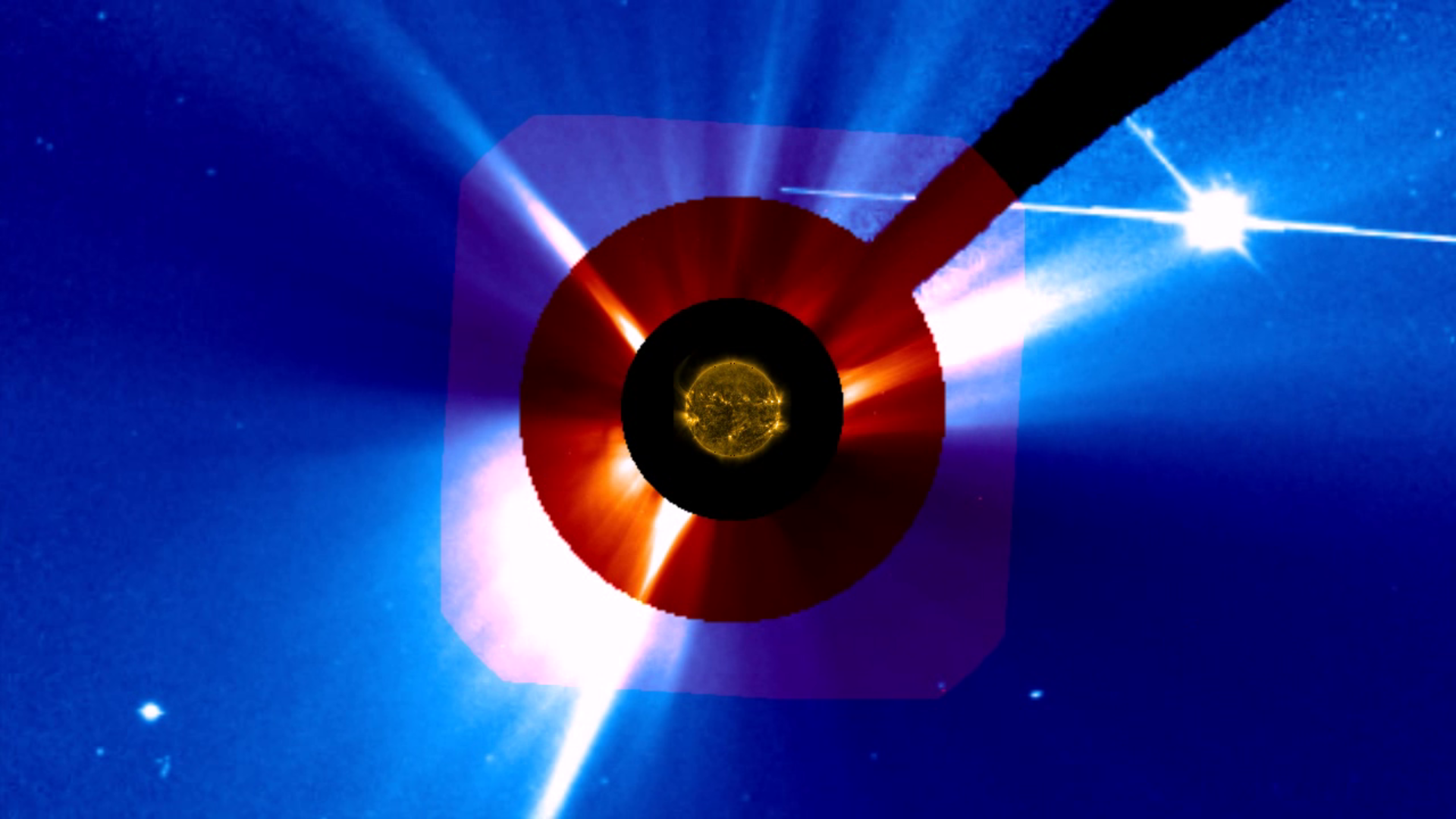
Access the video
While this made the analysis of any comet-related effects far more complex than anticipated, it triggered one of the largest collaborative efforts to trace the journey of an interplanetary ‘coronal mass ejection’ – a CME – from the Sun to the far reaches of the outer Solar System.
Although Earth itself was not in the firing line, a number of Sun-watching satellites near Earth – ESA’s Proba-2, the ESA/NASA SOHO and NASA’s Solar Dynamics Observatory – had witnessed a powerful solar eruption a few days earlier, on 14 October.
NASA’s Stereo-A not only captured images of the other side of the Sun with respect to Earth, but also collected in situ information as the CME rushed passed.
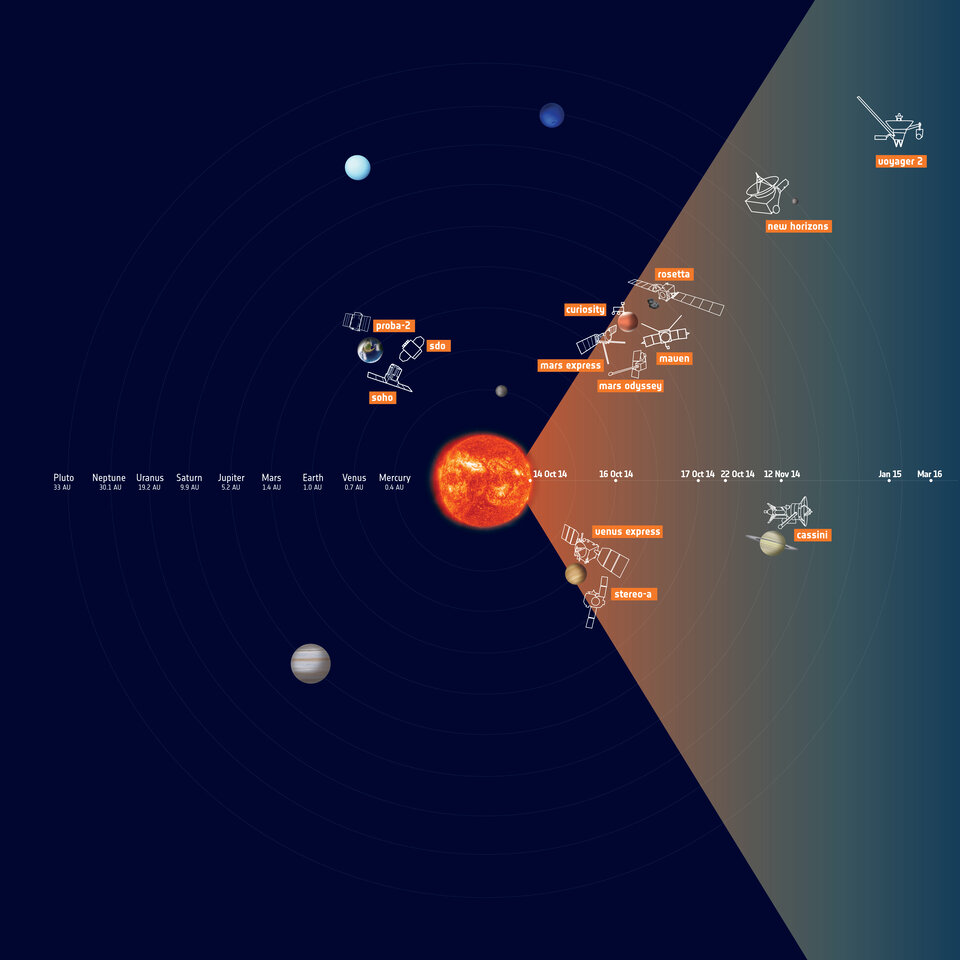
Thanks to the fortuitous locations of other satellites lying in the direction of the CME’s travel, unambiguous detections were made by three Mars orbiters – ESA’s Mars Express, NASA’s Maven and Mars Odyssey – and NASA’s Curiosity Rover operating on the Red Planet’s surface, ESA’s Rosetta at Comet 67P/Churyumov–Gerasimenko, and the international Cassini mission at Saturn.
Hints were even found as far out as NASA’s New Horizons, which was approaching Pluto at the time, and beyond to Voyager-2. However, at these large distances it is possible that evidence of this specific eruption may have merged with the background solar wind.
“CME speeds with distance from the Sun is not well understood, in particular in the outer Solar System,” says ESA’s Olivier Witasse, who led the study.
“Thanks to the precise timings of numerous in situ measurements, we can better understand the process, and feed our results back into models.”
The measurements give an indication of the speed and direction of travel of the CME, which spread out over an angle of at least 116º to reach Venus Express and Stereo-A on the eastern flank, and the spacecraft at Mars and Comet 67P Churyumov–Gerasimenko on the western flank.
From an initial maximum of about 1000 km/s estimated at the Sun, a strong drop to 647 km/s was measured by Mars Express three days later, falling further to 550 km/s at Rosetta after five days. This was followed by a more gradual decrease to 450–500 km/s at the distance of Saturn a month since the event.

The data also revealed the evolution of the CME’s magnetic structure, with the effects felt by spacecraft for several days, providing useful insights on space weather effects at different planetary bodies. The signatures at the various spacecraft typically included an initial shock, a strengthening of the magnetic field, and increases in the solar wind speed.
In the case of ESA’s Venus Express, its science package was not switched on because Venus was ‘behind’ the Sun as seen from Earth, limiting communication capabilities.
A faint indication was inferred from its star tracker being overwhelmed with radiation at the expected time of passage.
Furthermore, several craft carrying radiation monitors – Curiosity, Mars Odyssey, Rosetta and Cassini – revealed an interesting and well-known effect: a sudden decrease in galactic cosmic rays. As a CME passes by, it acts like a protective bubble, temporarily sweeping aside the cosmic rays and partially shielding the planet or spacecraft.
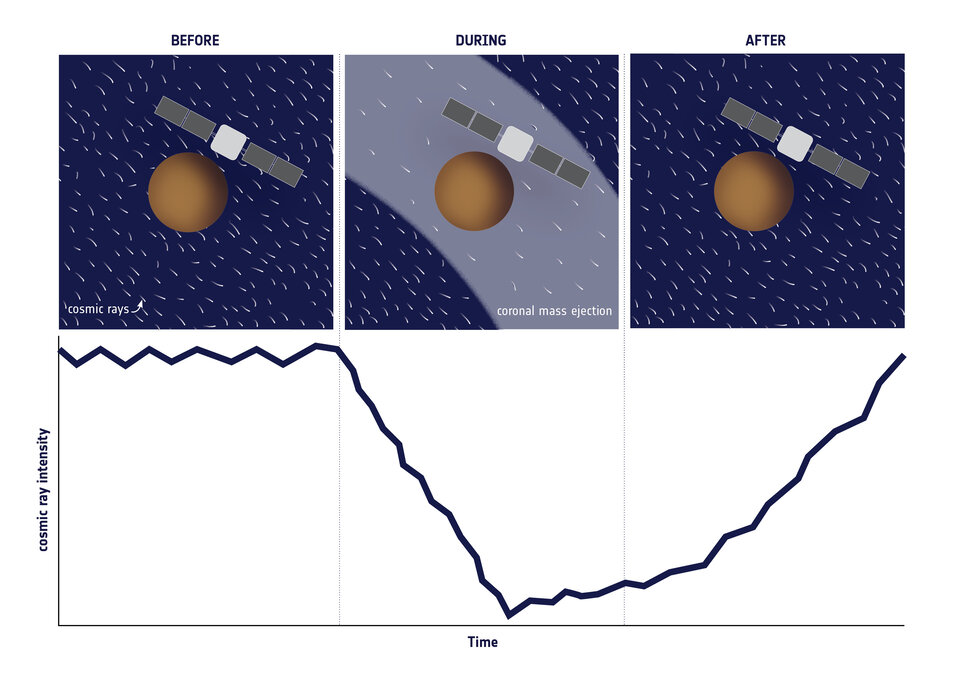
A drop of about 20% in cosmic rays was observed at Mars – one of the deepest recorded at the Red Planet – and persisted for about 35 hours. At Rosetta a reduction of 17% was seen that lasted for 60 hours, while at Saturn the reduction was slightly lower and lasted for about four days. The increase in the duration of the cosmic ray depression corresponds to a slowing of the CME and the wider region over which it was dispersed at greater distances.
“The comparison of the decrease in galactic cosmic ray influx at three widely separated locations due to the same CME is quite novel,” says Olivier. “While multispacecraft observations of CMEs have been done in the past, it is uncommon for the circumstances to be such to include so many spread across the inner and outer Solar System like this.
“Finally, coming back to our original intended observation of the passage of Comet Siding Spring at Mars, the results show the importance of having a space weather context for understanding how these solar events might influence or even mask the comet’s signature in a planet’s atmosphere.”
Notes for Editors
“Interplanetary coronal mass ejection observed at Stereo-A, Mars, comet 67P/Churyumov–Gerasimenko, Saturn and New Horizons en route to Pluto. Comparison of its Forbush decreases at 1.4, 3.1 and 9.9 AU,” by O. Witasse et al. is published in Journal of Geophysical Research: Space Physics, a journal of the American Geophysical Union.
For further information, please contact:
Olivier Witasse
European Space Agency
Email: olivier.witasse@esa.int
Markus Bauer
ESA Science and Robotic Exploration Communication Officer
Tel: +31 71 565 6799
Mob: +31 61 594 3 954
Email: Markus.Bauer@esa.int














 Germany
Germany
 Austria
Austria
 Belgium
Belgium
 Denmark
Denmark
 Spain
Spain
 Estonia
Estonia
 Finland
Finland
 France
France
 Greece
Greece
 Hungary
Hungary
 Ireland
Ireland
 Italy
Italy
 Luxembourg
Luxembourg
 Norway
Norway
 The Netherlands
The Netherlands
 Poland
Poland
 Portugal
Portugal
 Czechia
Czechia
 Romania
Romania
 United Kingdom
United Kingdom
 Slovenia
Slovenia
 Sweden
Sweden
 Switzerland
Switzerland


























